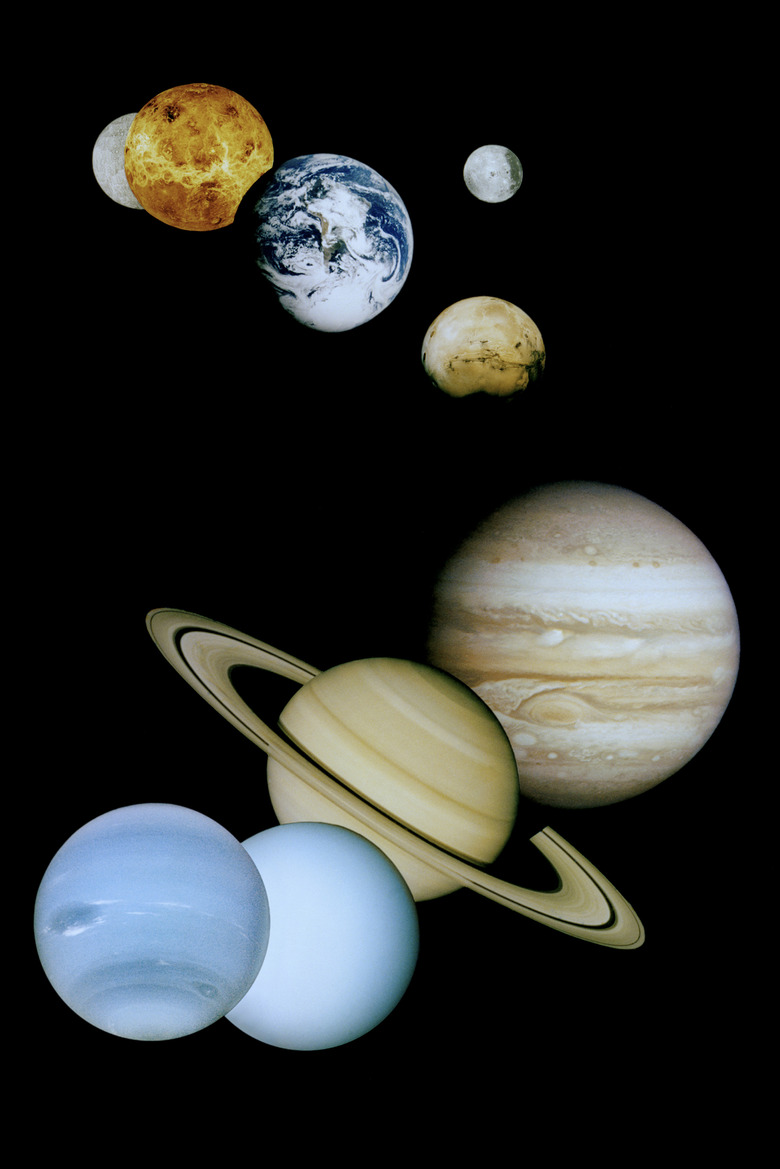How To Make A Solar System Model Of The Planets For Kids
Walk into an elementary classroom or a high school science room, and you will likely encounter a model of the solar system. Typical solar system models display the sun with eight orbiting planets. Complex models may include dwarf planets or moons. Creating a solar system model with your children is a fun and educational way to spend the afternoon. With a few simple, low-cost supplies, you can be on your way to exploring the planets.
Step 1
Arrange nine foam balls out on a table to mimic the order of the plants orbiting around the sun. The nine balls symbolize the sun and eight planets. If you want to include Pluto, add an extra ball. Choose foam balls that will replicate the actual sizes of the planets. For instance, make the sun's ball the largest. One way to determine ball sizes is to imagine if the Sun was a beach ball. Mercury, Venus, Earth, Mars and Pluto would be the size of a pea. Jupiter would be softball-sized, Saturn the size of a baseball. Uranus and Neptune would be the size of a golf ball. Paint the planets. Don't forget to paint rings on Saturn. Allow the planets to dry.
Step 2
Cut a 12-inch circle out of the cardboard box using the scissors. Find the center of the cardboard and make a black dot using the marker. Draw out orbit paths on the top of the cardboard using a compass for perfect circles. Place the first four planets close to the sun, leave a space for asteroid orbiting, and place the last four planets, including Pluto near the outside if you choose to use it. Using a skewer, punch out a hole on the center dot for the sun. Punch one hole on each orbit line for the planets. Stagger the holes so that the planets do not crowd each other. They will be hanging down from the cardboard circle at different lengths.
Step 3
Punch out a hole in the upper half of each planet using the skewer. Cut nine or 10 variable length pieces of clear fishing line with the scissors. Use lengths approximately 12 to 16 inches long. Run a piece of the fishing line through each planet and tie it in a knot securing it to the line. Run the opposite end of the line up through the corresponding hole for that specific planet and tape it to the top of the cardboard. Repeat this procedure for the sun and the rest of the planets.
Step 4
Poke four holes through the cardboard circle using the skewer. Place the holes evenly apart and on the edge of the circle. Tie a 12-inch piece of fishing line to each hole so that the string is above the circle. Tie all four pieces of fishing line together at the end not fastened to the cardboard. Tie one piece of fishing line to the four connected lines to create a mobile effect. Hang the solar system model from the ceiling and enjoy.
Things Needed
- Nine to 10 foam balls
- Tempera paint
- Scissors
- Permanent magic marker
- Compass
- Cardboard box with at least 12-inch sides
- Skewer
- Clear fishing line
- Tape
TL;DR (Too Long; Didn't Read)
You can use yarn for string instead of fishing line.
To save more money, make flat planets out of colored construction paper.
Warning
Adult supervision is recommended when poking holes with the skewer.
Do not hang the solar system model directly from a light source.
Cite This Article
MLA
Radabaugh, Steph. "How To Make A Solar System Model Of The Planets For Kids" sciencing.com, https://www.sciencing.com/make-solar-system-model-planets-kids-12059935/. 24 April 2017.
APA
Radabaugh, Steph. (2017, April 24). How To Make A Solar System Model Of The Planets For Kids. sciencing.com. Retrieved from https://www.sciencing.com/make-solar-system-model-planets-kids-12059935/
Chicago
Radabaugh, Steph. How To Make A Solar System Model Of The Planets For Kids last modified August 30, 2022. https://www.sciencing.com/make-solar-system-model-planets-kids-12059935/
